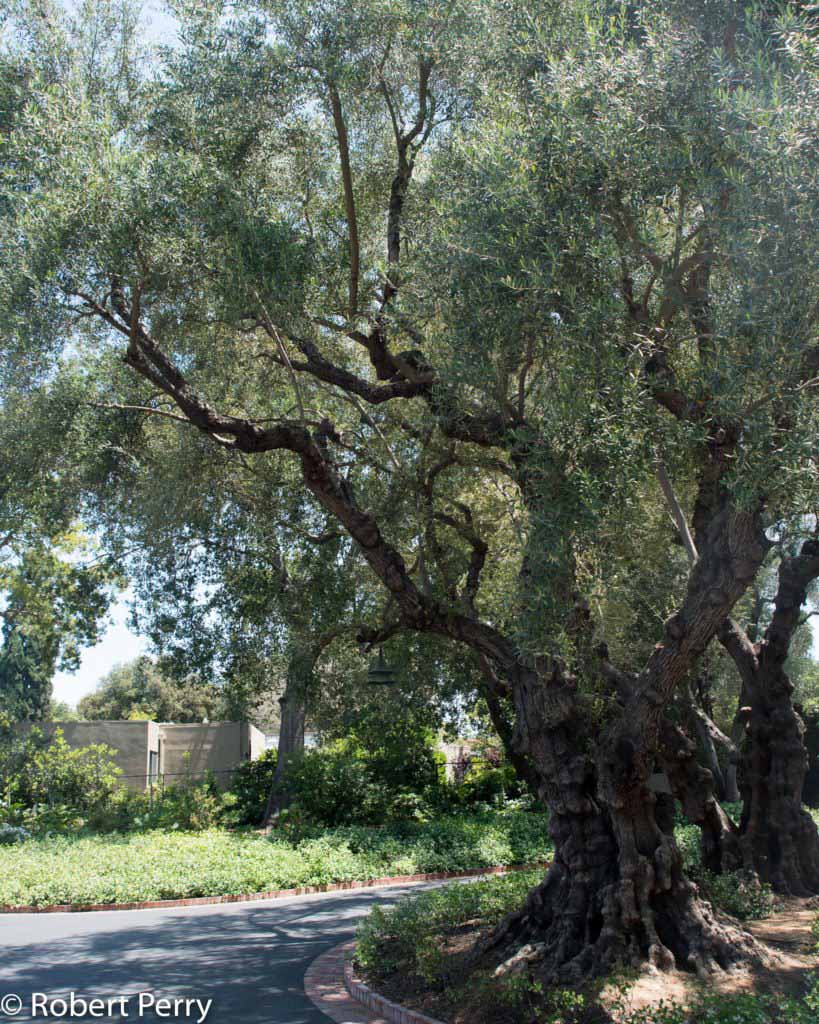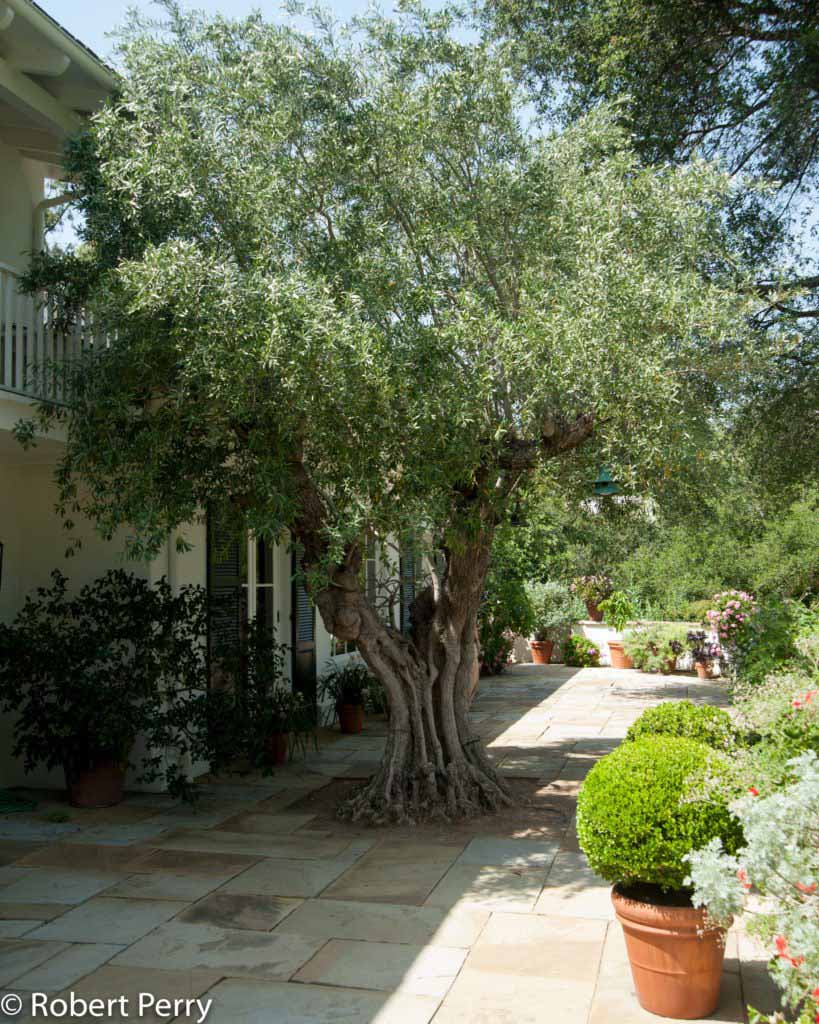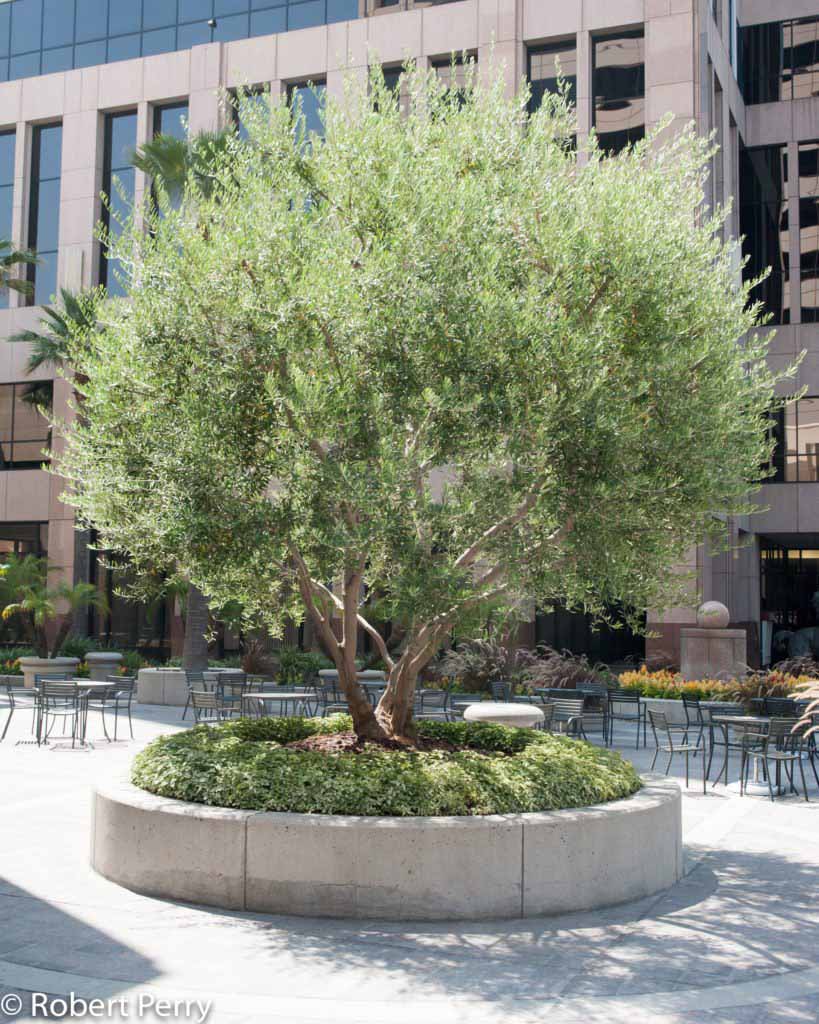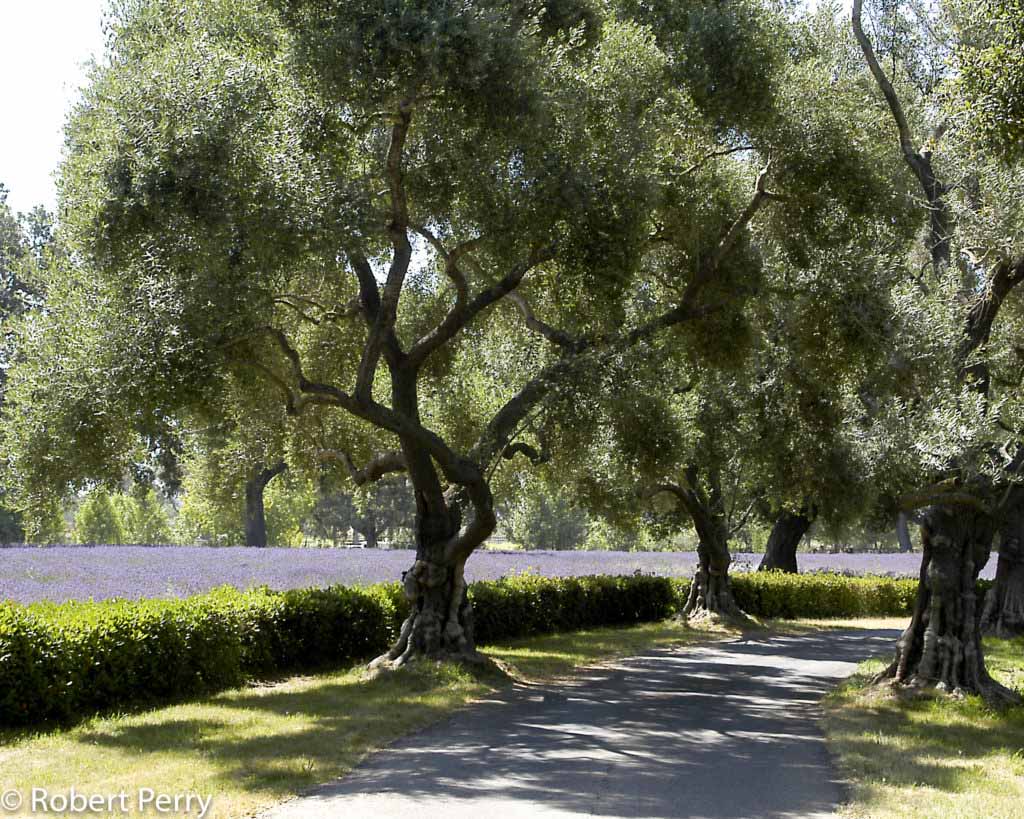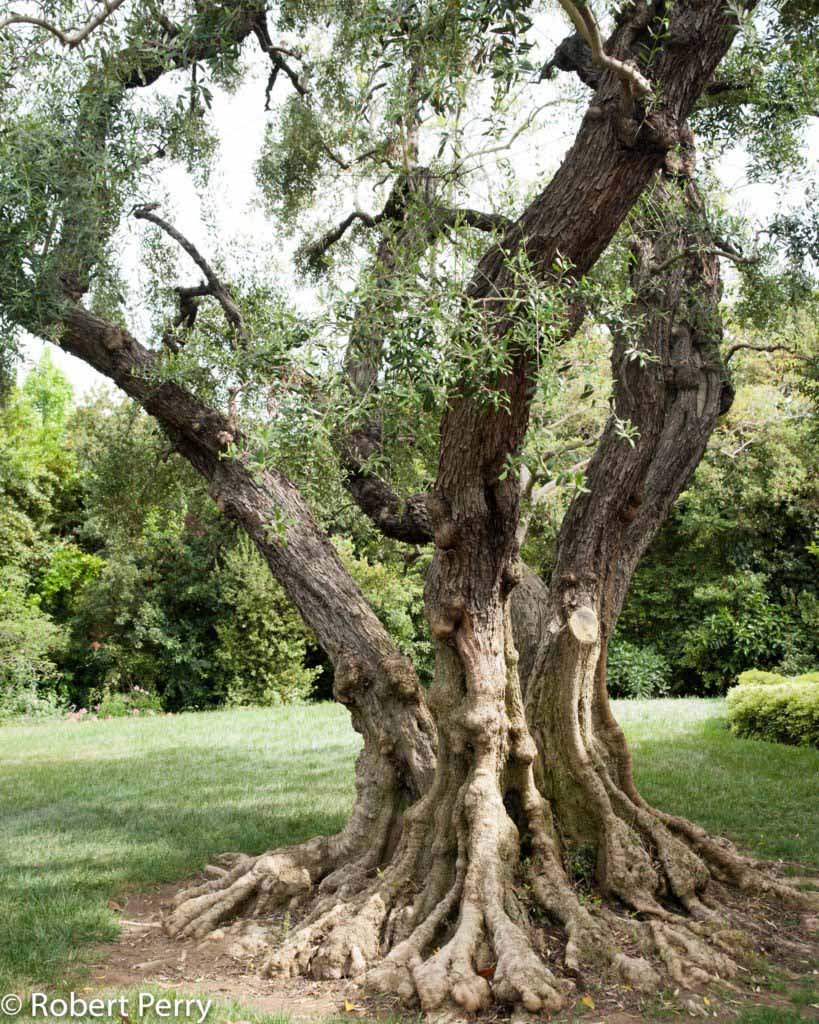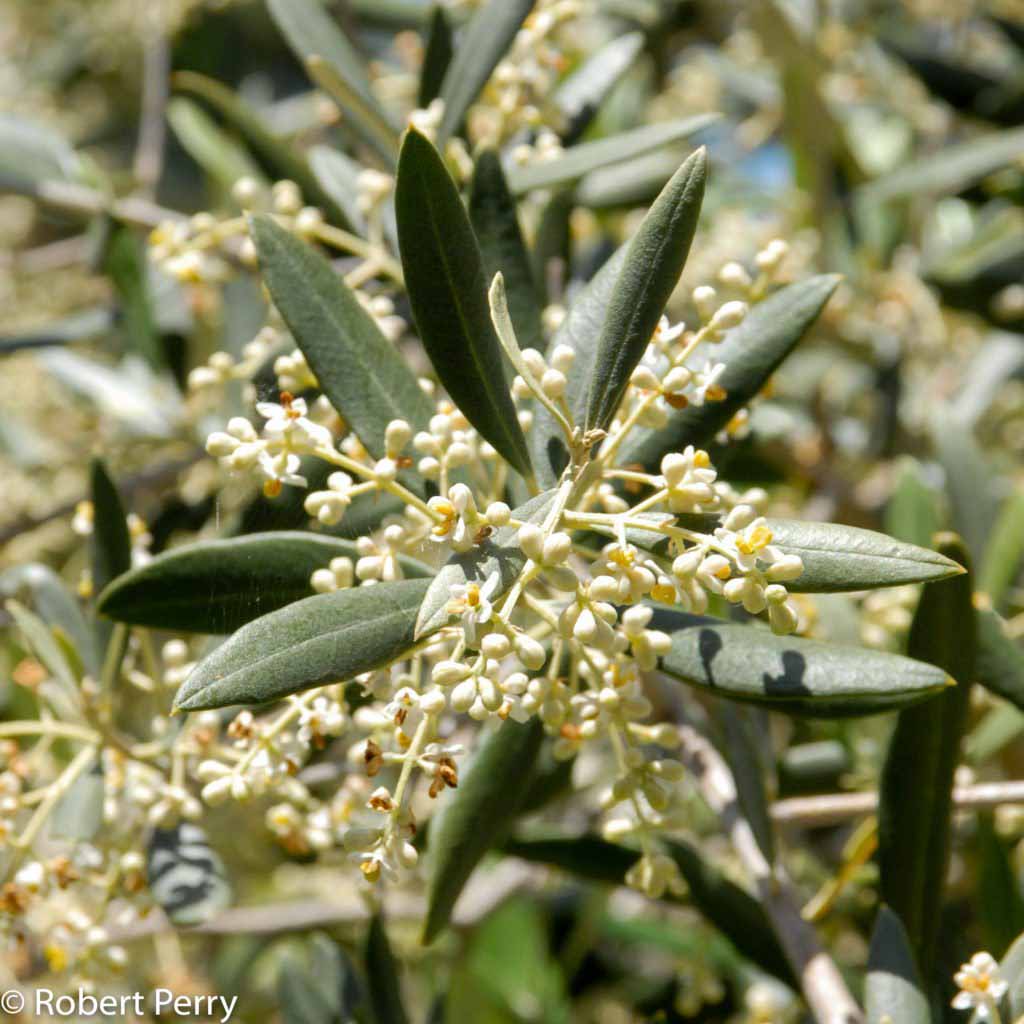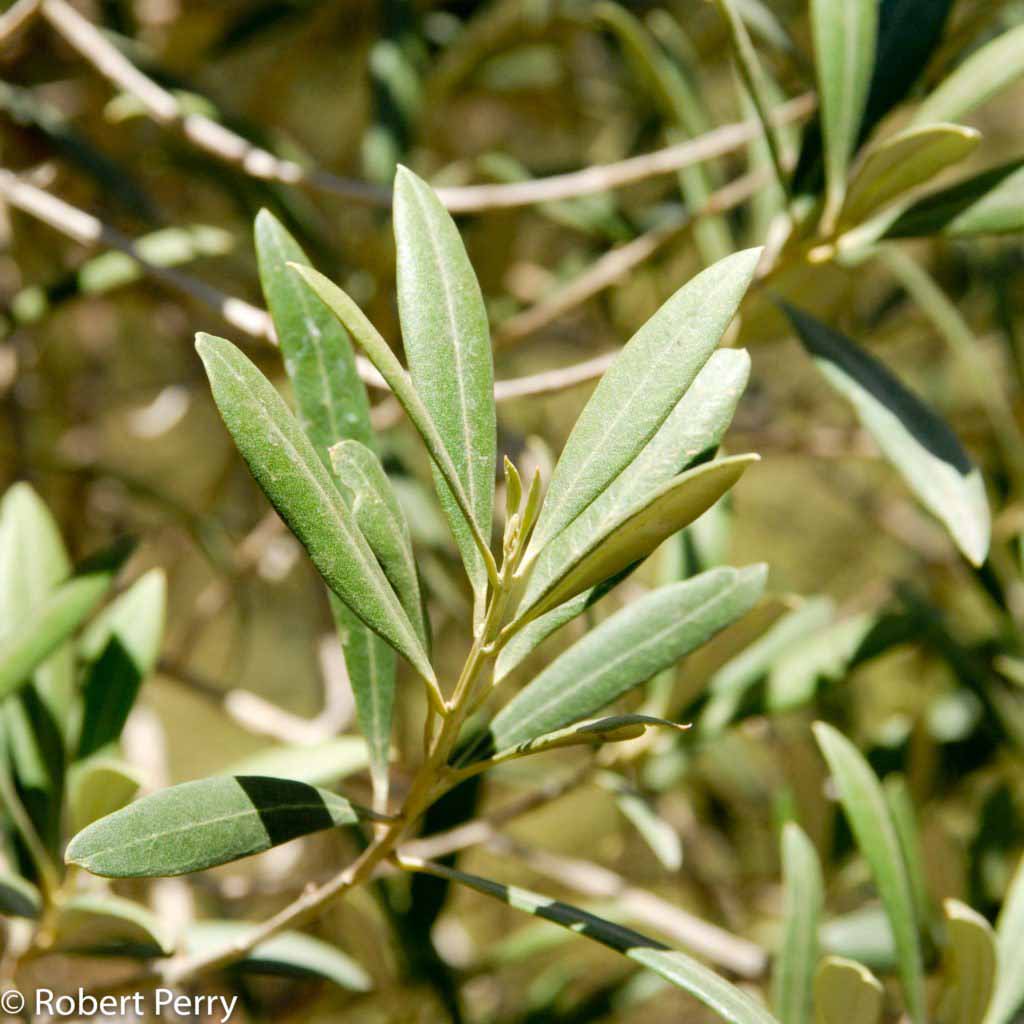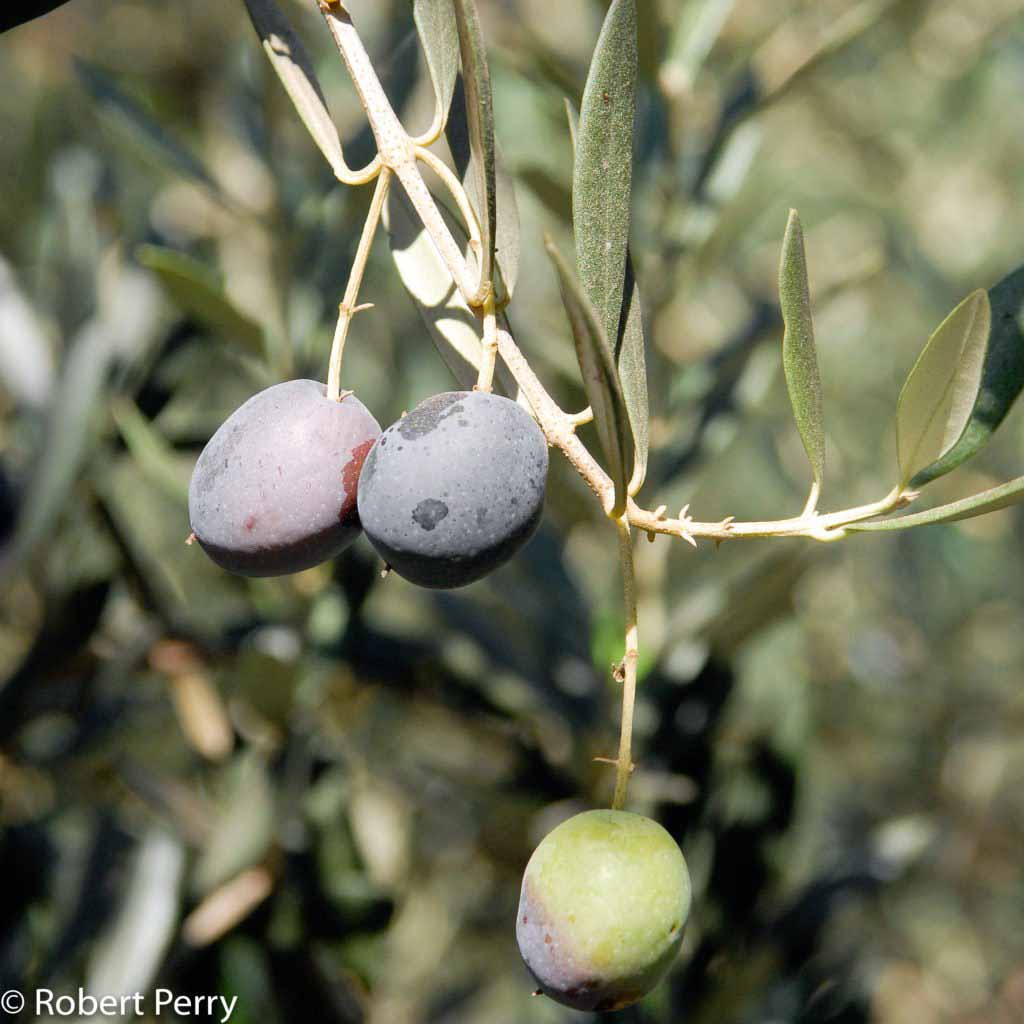Please note:
For most situations, we would not recommend installing this plant in new gardens, landscapes, or plantings in southern California.
A fatal bacterial disease for olives, known as xylella is becoming wide spread in southern California. It is spread by a tiny insect, the glassy-winged sharpshooter, that sucks sugars out of olives and other plants. The sucking insects do not directly harm the plant, but if carrying the xylella bacteria, it can spread the disease to each plant it sucks from. While there are still many healthy olives in the area, many have died, so we do not recommend any kind of olive for new plantings in the area.
Depending on the situation and desired size, top recommended trees to consider instead include Engelmann oak, toyon, and Marina strawberry tree. All of these plants also provide far greater habitat value for songbirds and butterflies, particularly Engelmann oak.
This plant profile is included in this site as a reference for two primary reasons:
- If you already have this plant in your landscape, this information can be used to know how to care for it.
- If you already have this plant in your landscape, you can use this information to learn which of our recommended plants have the same recommended watering needs, making them potential choices for grouping together if you will be adding new plants to the existing area.
Native to the Mediterranean region of Europe, the Olive tree is one of the most widely valued trees around the world for its fruit, oil and landscape uses. Olives are evergreen trees with an upright branching habit, 25-35 ft. tall, spreading 20-30 ft. wide; old trees often have stout trunks. Pale green foliage is a distinctive characteristic. Creamy-yellow flowers occur in mid spring and many trees produce heavy crops of green olive-type fruit that mature to black by fall.
The Olive is adapted to many soil types, including calcareous, as well as sun, heat and summer drought. They tolerate heavy pruning to manage size and are sometimes clipped into formal and large scale topiary shapes.
Olives pose several challenges when planted in ornamental landscapes. Pollen from flowers is highly allergenic to many people, and large quantities of fruit ripen and fall each year and can stain pavement. As a result of these concerns, several low-flowering and non-fruiting cultivars are now available from nurseries including: O. e. ‘Majestic Beauty’ has thin pale green leaves with a light and airy canopy on a standard size tree. A few tiny fruit develop on this cultivar. O. e. ‘Swan Hill’ is one of the most popular non-fruiting cultivar that produces less than 1% of the average pollen of fruiting varieties. O. e. ‘Wilsonii’ (O. e. ‘Fruitless) grows to standard sizes with narrow pale green leaves and an open foliage habit; it rarely produces mature fruit. A dwarf cultivar, O. e. ‘Little Ollie’ is a non-fruiting hybrid with a dense foliage habit that grows 6-8 ft. tall and as wide.
